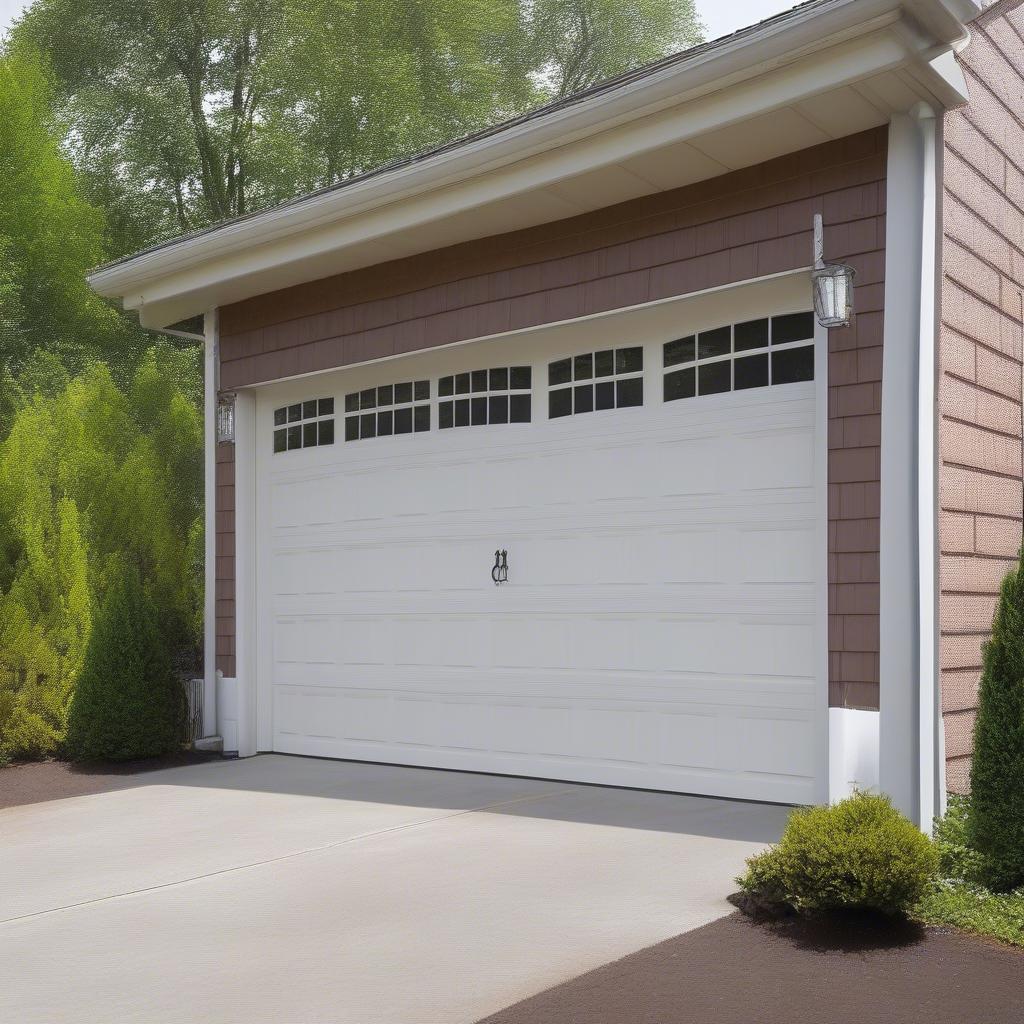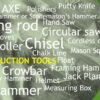
How to Properly Lubricate Your Garage Door Components
If you want your garage door to operate smoothly and quietly, it needs proper lubrication. Over time, friction naturally builds up between the various moving parts of your garage door system. As this friction increases, you’ll notice your door becoming noisier when opening and closing. Regular lubrication helps reduce this friction, and helps your garage door move up and down effortlessly and silently.
Beyond just noise reduction, keeping your garage door well-lubricated helps extend the lifespan of its components. It minimizes wear and tear, helping to prevent premature breakdowns that lead to costly repairs. It’s essential to lubricate the garage door components regularly – here’s how to get started.
Identifying Parts Requiring Lubrication
When it comes to lubricating your garage door, it’s essential to know exactly which parts need attention. Several key components make up the system, and each plays a role in smooth operation.
Hinges are a great place to start. These connect the individual panels of your garage door, enabling them to flex and move as a single unit. Apply lubricant directly to the hinge pins to keep them rotating freely and silently. Next, turn your attention to the rollers. These are the wheels that ride along the tracks in an up and down movement. Well-lubricated rollers minimize friction, making it far easier to open and close your garage door. However, if your rollers are nylon, do not apply lubricant.
Don’t overlook the springs and bearing plates at the top of the door. These hold the heavy weight of the garage door and will benefit from periodic lubrication to maintain their integrity. In all instances, be sure to wipe away any excess lubricant – it shouldn’t be dripping from any of the components.
It’s a good idea to wipe down the tracks with a damp cloth to remove any dirt and debris, but don’t add lubrication to the actual tracks. That just makes it harder for the rollers to move, forcing the opener to work harder.
What Type of Lubricant to Use for the Garage Door
You might be surprised to learn that not all lubricants are created equal, and the type you choose can impact how your garage door operates. Silicone-based lubricants are an excellent choice for garage doors. They provide long-lasting lubrication and won’t attract dirt or dust. This makes silicone lubricants ideal for the hinges, rollers, and springs. Silicone-based lubricants maintain their viscosity over a wide temperature range, ensuring consistent performance through a hot summer and freezing winter.
White lithium grease is another good option to consider. It’s specifically designed for metal-to-metal applications and provides heavy-duty lubrication, making it well-suited for the weight-bearing springs. But keep in mind it can attract dirt, so use it sparingly to avoid creating a mess.
On the other hand, WD-40 and oil-based lubricants should be avoided, as they will attract dirt and dust, leading to premature wear on the components. By selecting a silicone-based lubricant or white lithium grease, you can ensure your garage door’s components receive the effective lubrication they need to function at their best.
Pre-Lubrication Maintenance Checklist
Before you break out the lubricant, you’ll want to do a quick once-over on your garage door. This ensures the lubricant is as effective as possible and helps you identify any potential issues before they become major problems.
- Inspect the door’s balance: Make sure the door is properly balanced. An unbalanced door puts extra stress on the components.
- Check for any loose hardware: Tighten any loose screws, nuts, or bolts. Loose hardware can lead to further vibration and wear when the door operates.
- Clean the components: Wipe down the hinges, rollers, tracks, and springs with a cloth to remove any built-up dirt and grime. Clean components allow the lubricant to adhere better and work more effectively.
- Inspect for signs of excessive wear: Look for signs of heavy wear on the rollers or hinges. If you notice excessive wear, consider replacing these parts before lubricating to ensure the best results.
- Check the seals: Ensure the door seals tightly to the ground when closed. Any gaps can let in moisture, affecting the performance of the lubricant.
By performing this thorough pre-lubrication checklist, you can ensure your garage door is in good working condition and will function at its absolute best.
Step-by-Step Guide to Lubricating Your Garage Door
To properly lubricate your garage door, you’ll want to target the right components with the right amount of lubricant. Here’s a step-by-step guide to get you started:
- Choose the Right Lubricant: As we mentioned above, it’s essential to use the right type of lubricant for your garage door. Avoid using WD-40 as it can attract dirt and dust, doing more harm than good. Instead, opt for a high-quality silicone-based spray lubricant or a lithium grease spray. Both are specifically designed for garage door hinges and rollers.
- Prepare the Door: Inspect the hinges and rollers. If you find any rollers covered in stubborn grime or old lubricant, clean them off using a cloth and automotive brake cleaner. Let everything dry completely before proceeding.
- Lubricating Hinges: These connect the individual panels of your garage door, allowing them to flex. Spray a small amount of silicone lubricant directly onto the hinge pins. Use a clean cloth to wipe off any excess that squishes out – you want just enough lubricant to keep the hinge pin rotating smoothly.
- Lubricating Rollers: These ride along the tracks to facilitate up and down movement. Spray lubricant onto the rollers, making sure to coat the bearings thoroughly. Try to avoid getting lubricant on the tracks themselves.
- Lubricating Springs: If your garage door has a torsion spring system – a single spring above the door – spray lubricant along its entire length. If you have an extension spring system – springs on either side of the door – lubricate the pulleys. Be careful, as the springs are under high tension.
Important Tips
- Use the right amount: Don’t overlubricate. Excess lubricant attracts dirt. Use a clean cloth to wipe off any excess you see.
- Test the door: Open and close the garage door several times to work the lubricant into all the moving parts. If you still hear squeaks or grinding noises, you may need to add a bit more to those specific areas.
- Reapply as needed: Relubricate every 3-6 months or as needed based on usage and climate. If you notice your door becoming noisy or difficult to open, it may be time to reapply.
Recommended Lubrication Frequency
How often you should lubricate your garage door depends on several things, starting with how often you use it. If your garage door sees heavy daily use – such as in a large family household – you may need to lubricate every 3 months to maintain smooth operation. For average use, lubricating every 6 months is typically sufficient.
The local climate also plays a role. In dusty or humid climates, lubricant may not last as long and may need to be reapplied more frequently. Regularly inspect your door’s components and relubricate as needed based on conditions. The age of the components is another factor. Newer components may not require lubrication as frequently as older ones that have accumulated wear over time.
If you notice your door becoming noisy or difficult to open, it’s a sign the components need to be relubricated. By staying on top of regular lubrication, you can keep your garage door running smoothly and extend its overall lifespan.
Lubrication is Key to Extending the Life of a Garage Door
To keep your garage door working optimally, identify key components like hinges, rollers, and springs that need lubrication. Choose the right lubricant – silicone or white lithium grease – and avoid attracting dirt with WD-40 or oil-based lubricants. Before lubricating, inspect the door’s balance, tighten loose hardware, clean components, check for wear, and ensure a tight seal. Relubricate every 3-6 months or as needed based on usage, climate, and age of the components. By following these steps, you can keep your garage door well-lubricated and running its best. What components of a garage door require lubrication?
What components of a garage door require lubrication?
Hinges, rollers, springs, and bearing plates.
Which lubricants are best for a garage door?
Silicone-based lubricants and white lithium grease.
Should I clean the tracks before lubricating?
Yes, but do not lubricate the tracks; clean them with a damp cloth.
How often should I lubricate a garage door?
Every 3-6 months, or more frequently in dusty or humid climates.
Can I use WD-40 or oil-based lubricants on a garage door?
No, these attract dirt and dust, causing premature wear.
What is the pre-lubrication maintenance checklist for a garage door?
Inspect balance, tighten hardware, clean components, check for wear, and ensure a tight seal.
What should I do if my garage door remains noisy after lubrication?
Check and lubricate specific noisy areas, and make sure to use the right amount of lubricant.
How do I lubricate the rollers of a garage door?
Spray lubricant onto the rollers, coating the bearings thoroughly.
Should I lubricate the garage door tracks?
No, wipe them clean but do not lubricate them.
Why is it important to lubricate a garage door?
To reduce friction, noise, and wear, and to lengthen the lifespan of the door.















